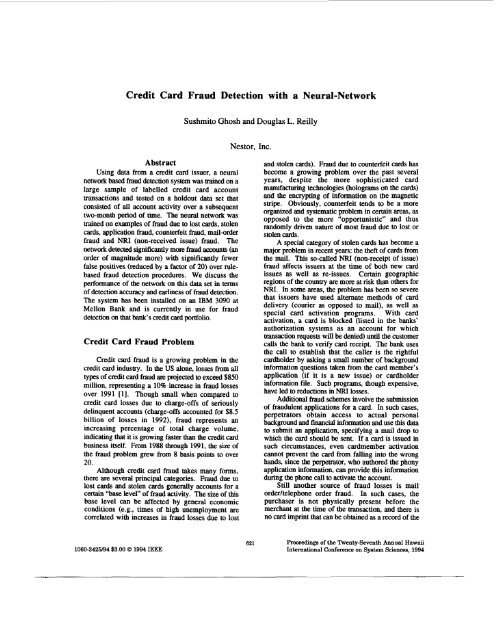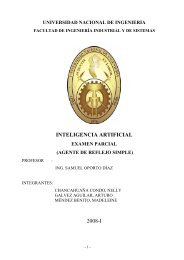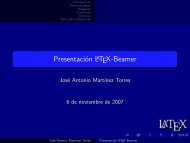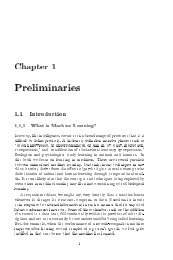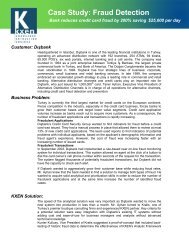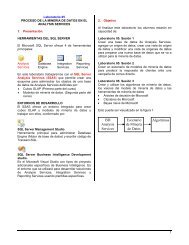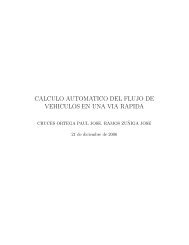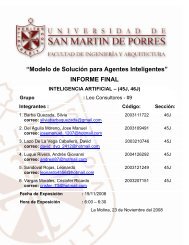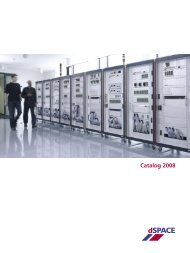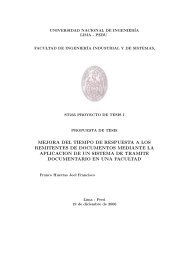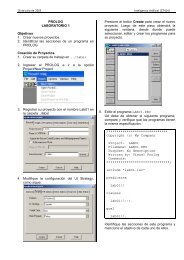Credit card fraud detection with a neural-network ... - Wiphala.net
Credit card fraud detection with a neural-network ... - Wiphala.net
Credit card fraud detection with a neural-network ... - Wiphala.net
Create successful ePaper yourself
Turn your PDF publications into a flip-book with our unique Google optimized e-Paper software.
<strong>Credit</strong> Card Fraud Detection <strong>with</strong> a Neural-Network<br />
Sushmito Ghosh and Douglas L. Reilly<br />
Nestor, Inc.<br />
Abstract<br />
Using data from a credit <strong>card</strong> issuer, a <strong>neural</strong><br />
<strong><strong>net</strong>work</strong> based <strong>fraud</strong> <strong>detection</strong> system was trained on a<br />
large sample of labelled credit <strong>card</strong> account<br />
transactions and tested on a holdout data set that<br />
consisted of all account activity over a subsequent<br />
two-month period of time. The <strong>neural</strong> <strong><strong>net</strong>work</strong> was<br />
trained on examples of <strong>fraud</strong> due to lost <strong>card</strong>s, stolen<br />
<strong>card</strong>s, application <strong>fraud</strong>, counterfeit <strong>fraud</strong>, mail-order<br />
<strong>fraud</strong> and NRI (non-received issue) <strong>fraud</strong>. The<br />
<strong><strong>net</strong>work</strong> detected significantly more <strong>fraud</strong> accounts (an<br />
order of magnitude more) <strong>with</strong> significantly fewer<br />
false positives (reduced by a factor of 20) over rulebased<br />
<strong>fraud</strong> <strong>detection</strong> procedures. We discuss the<br />
performance of the <strong><strong>net</strong>work</strong> on this data set in terms<br />
of <strong>detection</strong> accuracy and earliness of <strong>fraud</strong> <strong>detection</strong>.<br />
The system has been installed on an IBM 3090 at<br />
Mellon Bank and is currently in use for <strong>fraud</strong><br />
<strong>detection</strong> on that bank’s cmlit <strong>card</strong> portfolio.<br />
<strong>Credit</strong> Card Fraud Problem<br />
<strong>Credit</strong> <strong>card</strong> <strong>fraud</strong> is a growing problem in the<br />
credit <strong>card</strong> industry. In the US alone, losses from all<br />
types of credit <strong>card</strong> <strong>fraud</strong> are projected to exceed $850<br />
million, representing a 10% increase in <strong>fraud</strong> losses<br />
over 1991 111. Though small when compared to<br />
credit <strong>card</strong> losses due to charge-offs of seriously<br />
delinquent accounts (charge-offs accounted for $8.5<br />
billion of losses in 1992). <strong>fraud</strong> represents an<br />
increasing percentage of total charge volume,<br />
indicating that it is growing faster than the credit <strong>card</strong><br />
business itself. From 1988 through 1991, the size of<br />
the <strong>fraud</strong> problem grew from 8 basis points to over<br />
20.<br />
Although credit <strong>card</strong> <strong>fraud</strong> takes many forms,<br />
there are several principal categories. Fraud due to<br />
lost <strong>card</strong>s and stolen <strong>card</strong>s generally accounts for a<br />
certain “base level” of <strong>fraud</strong> activity. The size of this<br />
base level can be affected by general economic<br />
conditions (e.g., times of high unemployment are<br />
correlated <strong>with</strong> increases in <strong>fraud</strong> losses due to lost<br />
and stolen <strong>card</strong>s). Fraud due to counterfeit <strong>card</strong>s has<br />
become a growing problem over the past several<br />
years, despite the more sophisticated <strong>card</strong><br />
manufacturing technologies (holograms on the <strong>card</strong>s)<br />
and the encrypting of information on the mag<strong>net</strong>ic<br />
stripe. Obviously, counterfeit tends to be a more<br />
organized and systematic problem in certain areas, as<br />
opposed to the more “opportunistic” and thus<br />
randomly driven nature of most <strong>fraud</strong> due to lost or<br />
stolen <strong>card</strong>s.<br />
A special category of stolen <strong>card</strong>s has become a<br />
major problem in recent years: the theft of <strong>card</strong>s from<br />
the mail. This so-called NRI (non-receipt of issue)<br />
<strong>fraud</strong> affects issuers at the time of both new <strong>card</strong><br />
issues as well as re-issues. Certain geographic<br />
regions of the country are more at risk than others for<br />
NRI. In some areas, the problem has been so severe<br />
that issuers have used alternate methods of <strong>card</strong><br />
delivery (courier as opposed to mail), as well as<br />
special <strong>card</strong> activation programs. With <strong>card</strong><br />
activation, a <strong>card</strong> is blocked (listed in the banks’<br />
authorization systems as an account for which<br />
transaction requests will be denied) until the customer<br />
calls the bank to verify <strong>card</strong> receipt. The bank uses<br />
the call to establish that the caller is the rightful<br />
<strong>card</strong>holder by asking a small number of background<br />
information questions taken from the <strong>card</strong> member’s<br />
application (if it is a new issue) or <strong>card</strong>holder<br />
information file. Such programs, though expensive,<br />
have led to reductions in NRI losses.<br />
Additional <strong>fraud</strong> schemes involve the submission<br />
of <strong>fraud</strong>ulent applications for a <strong>card</strong>. In such cases,<br />
perpetrators obtain access to actual personal<br />
background and financial information and use this data<br />
to submit an application, specifying a mail drop to<br />
which the <strong>card</strong> should be sent. If a <strong>card</strong> is issued in<br />
such circumstances, even <strong>card</strong>member activation<br />
cannot prevent the <strong>card</strong> from falling into the wrong<br />
hands, since the pepfrator, who authored the phony<br />
application information, can provide this information<br />
during the phone call to activate the account.<br />
Still another source of <strong>fraud</strong> losses is mailordedtelephone<br />
order <strong>fraud</strong>. In such cases, the<br />
purchaser is not physically present before the<br />
merchant at the time of the transaction, and there is<br />
no <strong>card</strong> imprint that can be obtained as a record of the<br />
1060-3425/94 $3.00 0 1994 IEEE<br />
621<br />
Proceedings of the Twenty-Seventh Annual Hawaii<br />
International Conference on System Sciences, 1994
transaction. Efforts to combat such MOR0 <strong>fraud</strong><br />
have included verification of address information over<br />
the phone <strong>with</strong> the <strong>card</strong>holder at the time of the<br />
Phi=*<br />
All of the above tend to be examples of<br />
<strong>card</strong>holder or account <strong>fraud</strong>. There is also <strong>fraud</strong> that<br />
originates at the merchant. Such merchant <strong>fraud</strong> can<br />
involve the “laundering” of phony merchant receipts,<br />
garnering large sums of money for transactions that<br />
never occurred. In some cases, merchant collusion<br />
results in the merchant’s establishment being used as<br />
a location at which account information is copied<br />
during the course of legitimate transactions. This<br />
information is subsequently used to produce<br />
counterfeit duplicate <strong>card</strong>s, which are then used<br />
elsewhere for <strong>fraud</strong>ulent transactions. In this scheme,<br />
the collusive merchant is regarded as a “point of<br />
compromise”; all such counterfeited <strong>card</strong>s have<br />
transaction histories that can be traced back to use at<br />
the given merchant’s establishment.<br />
Additionally, there is an entire area of <strong>fraud</strong> that<br />
is often referred to as abuse. In this category, the<br />
<strong>card</strong>holder makes purchases on the <strong>card</strong> for which<br />
he/she has no intention of paying. In some cases,<br />
this is pre-meditated activity that occurs just prior to<br />
the <strong>card</strong>holder’s filing for personal bankruptcy.<br />
Losses due to this “bankruptcy <strong>fraud</strong>” problem are not<br />
considered part of the credit <strong>card</strong> <strong>fraud</strong> problem itself,<br />
and are reported as part of charge-off losses. At least<br />
one estimate puts the size of bankruptcy <strong>fraud</strong> in the<br />
neighborhood of $2.65 billion in 1992, which would<br />
make it larger than all other <strong>fraud</strong> losses combined<br />
111.<br />
Current Methods of Fraud Detection<br />
The diversity of <strong>fraud</strong>ulent activity as evidenced<br />
by the many forms of <strong>fraud</strong> makes <strong>detection</strong> of<br />
<strong>fraud</strong>ulent behavior a non-trivial task. At most<br />
banks, some part of the review process of new<br />
applications for new credit <strong>card</strong>s involves routine<br />
information checks to spot possible <strong>fraud</strong>ulent<br />
applications. (In some cases, scrutiny of application<br />
forms for telltale methods of handwriting has led<br />
investigators to spot <strong>fraud</strong>ulent applications<br />
submitted by organized criminal elements. Some<br />
<strong>fraud</strong>ulent applications submitted by a Nigerian <strong>fraud</strong><br />
ring have been caught in this way.)<br />
Once a <strong>card</strong> has been issued, however, most<br />
banks rely upon periodic scrutiny of account behavior<br />
to determine if there is suspicion of <strong>fraud</strong>. In<br />
particular, banks have developed a series of rule-based<br />
checks against which all portfolio activity is<br />
reviewed. Such checks might specify nominal limits<br />
on the number of transactions that should reasonably<br />
be expected to occur in a single day. This excessive<br />
transaction report might also be limited to a count of<br />
transactions above some threshold on purchase<br />
amount.<br />
These <strong>fraud</strong> rules are developed as a result of<br />
historical analyses of past <strong>fraud</strong>ulent behavior in the<br />
portfolio. However, most banks use only the most<br />
basic of statistical analyses to develop the <strong>fraud</strong> rules,<br />
leading in most cases to rule sets that consist of a set<br />
of simple threshold conditions on account variables.<br />
Not surprisingly, the use of more sophisticated<br />
technologies for <strong>fraud</strong> <strong>detection</strong> can lead to<br />
dramatically improved results. In particular, when<br />
viewed as a problem in pattem recognition, the<br />
problem of <strong>fraud</strong> <strong>detection</strong> is an excellent application<br />
for an appropriately chosen <strong>neural</strong> <strong><strong>net</strong>work</strong> solution.<br />
Increasingly, a number of problems in financial<br />
services are being viewed in terms pattem recognition<br />
problems for which <strong>neural</strong> <strong><strong>net</strong>work</strong> solutions may be<br />
developed 121.<br />
The Mellon Bank Fraud Detection<br />
Feasibility Study<br />
A feasibility study was done for Mellon Bank to<br />
determine the effectiveness of a <strong>neural</strong> <strong><strong>net</strong>work</strong> for<br />
<strong>fraud</strong> <strong>detection</strong> on their credit <strong>card</strong> portfolio. The<br />
feasibility study consisted of training a <strong>neural</strong><br />
<strong><strong>net</strong>work</strong>-based system on a sample of good and <strong>fraud</strong><br />
accounts, followed by the execution of a blind test of<br />
the trained model on a separate, unsampled, holdout<br />
set of transactions. In the training set, transactions<br />
were provided together <strong>with</strong> gd<strong>fraud</strong> labels, while<br />
in the blind test set, no <strong>fraud</strong> labels were initially<br />
pvided.<br />
The study was designed to simulate the<br />
effectiveness of a <strong>fraud</strong> dewtion system deployed as a<br />
postprocessing step to the bank’s authorization<br />
system. When a transaction arrives for authorization,<br />
it is characterized by a stream of authorization data<br />
fields that carry information identifying the <strong>card</strong>holder<br />
(account number) and characteristics of the transaction<br />
(e.g., amount, merchant code). There are additional<br />
data fields that can be taken in a feed from the<br />
authorization system (e.g., time of day). In most<br />
cases, banks do not archive logs of their authorization<br />
files. Only transactions that are forwarded by the<br />
merchant for settlement are archived by the bank’s<br />
credit <strong>card</strong> processing system. Thus, a data set of<br />
transactions was composed from an extract of data<br />
stored in Mellon’s settlement file. In this extract,<br />
only that authorization information that was archived<br />
to the settlement file was available for model<br />
development. In particular, day but not time of<br />
transaction was available, as were amount of<br />
transaction and SIC code of the merchant.<br />
Transaction denials (authorization requests that were<br />
denied as opposed to authorized) were also not<br />
available.<br />
622
Additionally, payment information on the<br />
account was also available as an extract from the<br />
settlement file. Non-financial information (e.g., date<br />
of issue or date of last re-issue) was also included as a<br />
data field that was available at the time of a<br />
transaction request for authorization.<br />
One of the objectives of the study was to<br />
determine if the use of a wide variety of information<br />
characterizing the transaction would be helpful in<br />
developing improved <strong>fraud</strong> <strong>detection</strong> capability. What<br />
was envisioned was a system that could review each<br />
transaction in the context of the recent history of<br />
account transactions and payments, along <strong>with</strong> other<br />
non-financial data on the account, to determine<br />
likelihood of <strong>fraud</strong>.<br />
In the design of <strong>neural</strong> <strong><strong>net</strong>work</strong>-based pattem<br />
recognition systems, there is always a process of<br />
feature extraction that is applied to the input “raw”<br />
data fields in order to present to the <strong><strong>net</strong>work</strong> a set of<br />
inputs that is meaningfully organized in terms of the<br />
particular pattern recognition problem at hand. In<br />
this case, values from a set of 50 data fields were<br />
combined to produce a set of 20 features that were<br />
used as input to the <strong><strong>net</strong>work</strong>. These features can be<br />
roughly grouped in the four categories shown in<br />
Figure 2.<br />
Current transaction descriptors can include such<br />
features as the amount of the aansaction, the day and<br />
time at which it is occurring, (though time of day<br />
was not available for the Mellon study) as well as the<br />
standard industry code (SIC) of the merchant, a<br />
numeric code representing the nature of the merchant<br />
business (e.g., jewelry store, consumer electronics,<br />
restaurant, hotel, etc.) History descriptors contain<br />
features characterizing the use of the <strong>card</strong> for<br />
transactions and the payments made to the account<br />
over some immediately prior time interval. (For the<br />
Mellon study, the length of the history period for the<br />
account and payment-related variables was on the<br />
order of 8-10 weeks.) Other descriptors can include<br />
such factors as the date of issue (or most recent reissue)<br />
of the <strong>card</strong>. This can be important for the<br />
<strong>detection</strong> of NRI <strong>fraud</strong>.<br />
The transaction data for the training set consisted<br />
of a sample of the transactions on Mellon’s portfolio<br />
during the months of January through June, 1991.<br />
The original set of portfolio transactions was sampled<br />
in such a way that all <strong>fraud</strong> transactions were<br />
included, while a sample of the good transactions was<br />
chosen so as to have a ratio of roughly 30 good<br />
accounts for each <strong>fraud</strong>ulent account in the training<br />
set. An account was considered <strong>fraud</strong>ulent if, during<br />
the course of the time represented by the training set,<br />
it had at least one transaction labelled as <strong>fraud</strong>ulent.<br />
Altogether, some 450,000 transactions (as opposed to<br />
accounts) were used in the training set. The entire<br />
portfolio available for training consisted of<br />
approximately 650,000 accounts.<br />
As is often the case in dealing <strong>with</strong> real-world<br />
data, some effort was expended to validate the<br />
contents of data fields and to ensure that the data set<br />
did contain the full complement of <strong>fraud</strong>ulent activity<br />
from the time period in question. To the extent that<br />
only a partial picture of account activity or <strong>fraud</strong>ulent<br />
activity on the account is available during modeling,<br />
the model will train less effectively to detect <strong>fraud</strong>.<br />
The <strong>neural</strong> <strong><strong>net</strong>work</strong> used in this <strong>fraud</strong> <strong>detection</strong><br />
feasibility study is the P-RCE <strong>neural</strong> <strong><strong>net</strong>work</strong> [3].<br />
The P-RCE is a member of the family of radial-basis<br />
function <strong><strong>net</strong>work</strong>s that have been developed for<br />
application to pattem recognition. The P-RCE is a<br />
three-layer, feed-forward <strong><strong>net</strong>work</strong> that is distinguished<br />
by its use of only two training passes through the<br />
data set. The fust training pass involves a process of<br />
prototype cell commitment in which exemplars from<br />
the training set are stored in the weights between the<br />
fust and second (middle) layer cells of the <strong><strong>net</strong>work</strong>. A<br />
final training pass determines local a posteriori<br />
probabilities associated <strong>with</strong> each of these prototype<br />
cells. P-RCE training is not subject to problems of<br />
convergence that can afflict gradient-descent training<br />
algorithms. The P-RCE <strong><strong>net</strong>work</strong> and <strong><strong>net</strong>work</strong>s like it<br />
have been applied to a variety of pattem recognition<br />
problems both <strong>with</strong>in and beyond the field of<br />
financial services, from character recognition to<br />
mortgage underwriting and risk assessment [4,5,6,71.<br />
More detail on the P-RCE <strong><strong>net</strong>work</strong> is provided in the<br />
Appendix.<br />
In this study, the P-RCE output layer consisted<br />
of a single cell that outputs a numeric response that<br />
can be considered as a “<strong>fraud</strong> score”. This is<br />
analogous to credit scoring systems that produce a<br />
score, as opposed to a strict probability. The<br />
objective of the <strong>neural</strong> <strong><strong>net</strong>work</strong> training process is to<br />
arrive at a trained <strong><strong>net</strong>work</strong> that produces a <strong>fraud</strong> score<br />
that gives the best ranking of the credit <strong>card</strong><br />
transactions. If the ranking were perfect, all of the<br />
high scoring transactions down to some threshold<br />
would be <strong>fraud</strong>; below this threshold, only good<br />
transactions would be ranked. However, perfect<br />
separability of <strong>fraud</strong>s from goods is not possible due<br />
to the inherently non-separable nature of the <strong>fraud</strong> and<br />
good distributions in the selected pattern recognition<br />
Space.<br />
Final evaluation of the trained <strong><strong>net</strong>work</strong> was done<br />
on the Blind Test data set. The Blind Test data<br />
represented an unsampled set of all Mellon Bank’s<br />
transactions for the two month period October-<br />
623
November 1991. (Note that the model development<br />
data set was taken from transactions prior in time to<br />
that of the Blind Test data.) The <strong><strong>net</strong>work</strong> was tested<br />
on all (roughly) 2,000,000 transactions that were<br />
authorized in this two month period. Results are<br />
presented in the following figures.<br />
Figure 3 shows one measure of <strong>fraud</strong> <strong>detection</strong><br />
accuracy: a rank curve of the the percentage of<br />
<strong>fraud</strong>ulent transactions detected by the <strong>neural</strong> <strong><strong>net</strong>work</strong><br />
plotted against the number of <strong>card</strong>holder accounts that<br />
would be flagged by the system far review on a daily<br />
basis. We see from the shape of the curve that<br />
extremely high accuracies in <strong>fraud</strong> <strong>detection</strong> are<br />
obtained for those high <strong>fraud</strong> score values at which a<br />
small number of accounts are flagged for review each<br />
day. Further down the <strong>fraud</strong> score axis, the slope of<br />
the accuracy curve begins to flatten out. At lower<br />
<strong>fraud</strong> score cutoffs, where the number of accounts that<br />
are reviewed per day are in the neighborhood of 50<br />
accounts, nearly 40% of all <strong>fraud</strong>ulent transactions<br />
will appear among the accounts under review.<br />
By comparison, the effectiveness of Mellon’s<br />
prior <strong>fraud</strong> <strong>detection</strong> efforts on this same data were<br />
such as to require them to review approximately 750<br />
accounts per day, yielding, on the average, only one<br />
detected <strong>fraud</strong>ulent account per week. The<br />
improvement in <strong>detection</strong> performance is undeniably<br />
substantial.<br />
However, an increase in accuracy of <strong>detection</strong><br />
does not necessarily, by itself, bring a comparable<br />
improvement in terms of economic benefit. Most<br />
<strong>fraud</strong> is fast moving, beginning and ending over a<br />
three day period. It is possible to imagine a system<br />
that might, <strong>with</strong> great accuracy, detect the last<br />
<strong>fraud</strong>ulent transaction to occur on the <strong>card</strong>. Such a<br />
system would bring little economic benefit to the<br />
bank. It would have detected the <strong>fraud</strong>, but detected it<br />
too late to achieve any savings. Consequently, we<br />
also measm the earliness of the <strong>fraud</strong> <strong>detection</strong>.<br />
Figure 4 shows a histogram of a breakdown of<br />
when the <strong>fraud</strong> was detected far two different opefating<br />
points: a <strong>fraud</strong> score threshold at which, on average,<br />
one <strong>fraud</strong> account is detected per day and a lower<br />
<strong>detection</strong> threshold at which, on average, two <strong>fraud</strong><br />
accounts are detected per day. Two observations are<br />
important to note. The first is that a significant<br />
percentage of <strong>detection</strong>s are <strong>detection</strong>s of accounts on<br />
either the first or second day of <strong>fraud</strong> activity. At the<br />
1-<strong>fraud</strong>-per-day operating point, 50% of detected<br />
accounts are detected on either the first or second day<br />
of <strong>fraud</strong> activity.<br />
Secondly, if the <strong>fraud</strong> <strong>detection</strong> threshold is<br />
reduced so as to catch more <strong>fraud</strong>s, in particular to the<br />
point where the <strong>detection</strong>s are averaging two <strong>fraud</strong><br />
accounts per day, the percentage that are detected on<br />
either the first or second day of <strong>fraud</strong> activity climbs<br />
to 60%. Thus, lowering the <strong>fraud</strong> <strong>detection</strong> threshold<br />
can result not only in more <strong>fraud</strong> <strong>detection</strong>s but also<br />
in earlier <strong>detection</strong>. This early <strong>detection</strong> provides the<br />
bank the opportunity to take action to prevent future<br />
use of the <strong>card</strong> for <strong>fraud</strong>ulent transactions, thus<br />
reducing the average ‘“I” on the <strong>card</strong> and the average<br />
dollars lost to <strong>fraud</strong> per <strong>fraud</strong> account.<br />
Another measure of the <strong>detection</strong> performance<br />
concerns the types of <strong>fraud</strong> that the system is<br />
detecting. Figure 5 presents a breakdown, at the two<br />
different operating points, one <strong>fraud</strong> per day and two<br />
<strong>fraud</strong>s per day, of the &taxed <strong>fraud</strong>s as a percentage of<br />
the population of the major <strong>fraud</strong> categories.<br />
Importantly, the system is detecting <strong>fraud</strong> across all<br />
the major <strong>fraud</strong> categories.<br />
Since this is an historical study, it is possible to<br />
determine, in retrospect, a direct measure of savings<br />
that would have resulted from use of this technology<br />
and system for <strong>fraud</strong> <strong>detection</strong>. We compute the<br />
savings on a particular <strong>fraud</strong> accomt by summing the<br />
dollars associated <strong>with</strong> all <strong>fraud</strong>ulent transactions on<br />
that account subsequent to (and in some cases<br />
including) the Fist detected transaction, given a<br />
particular <strong>fraud</strong> score <strong>detection</strong> threshold. The total<br />
<strong>fraud</strong> dollar savings is then summed for all <strong>fraud</strong><br />
accounts. It is convenient to express this savings as<br />
a percentage of the total dollar <strong>fraud</strong> losses. Figure 6<br />
presents a plot of the percentage <strong>fraud</strong> loss saved<br />
versus total number of account reviews per day. (The<br />
explicit dependence on <strong>fraud</strong> score threshold is<br />
eliminated by casting this in terms of the number of<br />
accounts reviewed per day, which is directly<br />
demmined from the <strong>fraud</strong> score threshold.)<br />
Several graphs are presented in Figure 6. In the<br />
topmost curve (open squares), the percentage dollar<br />
<strong>fraud</strong> loss savings is plotted for a system that<br />
anticipates that the first detected transaction can be<br />
blocked at the point of sale. This requires that the<br />
system compute its <strong>fraud</strong> score for a given transaction<br />
request and message the authorization system in<br />
timely fashion to transmit a “Denial” response to the<br />
merchant. We call this the “real-time response”<br />
mode. The third curve from the top (open circles)<br />
shows the economic benefit for a system in which the<br />
first detected transaction is not blocked, but all<br />
subsequent transactions are blocked. This corresponds<br />
to a system that is perhaps scoring the transaction a<br />
short time interval after it has already been authorized.<br />
We might call this the “post-processing” mode. Each<br />
of these two curves gives rise to another curve, which<br />
624
emoves from consideration all transactions less than<br />
$50. These transactions would not be seen by<br />
Mellon’s authorization system either because the<br />
transaction amount was less than the merchant’s<br />
floor-limit, or because of Visa and MasterCard standin<br />
processing. Depending upon the mode of<br />
implementation and the selected operating point for<br />
<strong>fraud</strong> <strong>detection</strong>, savings in the range of 20% to in<br />
excess of 40% can be achieved.<br />
Importance of Payment Information<br />
In order to determine the contribution of the<br />
payment-related features to the accuracy of the model,<br />
a comparison was done of the performance of two<br />
different models, one trained <strong>with</strong> the benefit of<br />
payment-related features and one <strong>with</strong>out. This<br />
comparison was done on the training set, (as opposed<br />
to the Blind Test set), where the good accounts had<br />
been sampled by a 1:17 factor. The graph below<br />
shows the performance of the two different models.<br />
At many points along the rank curve, the model<br />
trained <strong>with</strong>out the benefit of payment-related features<br />
produces nearly twice as many accounts for review as<br />
the model trained <strong>with</strong> the benefit of payment-related<br />
features. Naturally, this factor will be influenced by<br />
the mix of <strong>fraud</strong> types in the portfolio. However,<br />
Figure 7 does present very firm evidence for the<br />
importance of payment-related information as input<br />
features to a <strong>neural</strong> <strong><strong>net</strong>work</strong>-based <strong>fraud</strong> <strong>detection</strong><br />
system.<br />
Installed Software<br />
The <strong>fraud</strong> <strong>detection</strong> feasibility study has led to an<br />
installation of the <strong>fraud</strong> <strong>detection</strong> software (FDSm) at<br />
Mellon Bank. The installation configuration chosen<br />
by Mellon Bank involves the execution of the scoring<br />
function of FDS periodically during the day (as of<br />
this writing, every two hours), scoring all<br />
transactions that have been authorized since the last<br />
scoring run. Additionally, there is a final scoring that<br />
occurs at the end of the day after account posting, to<br />
process the settlement file. The settlement file<br />
consists of transactions that were authorized by<br />
Mellon Bank and have now come in for posting,<br />
transactions that were authorized by Master<strong>card</strong> and<br />
Visa as “stand-in” processing and transactions of<br />
amounts less than the merchant’s floor limit which<br />
were not authorized. (For transactions below agreedupon<br />
amoun’ts, the credit <strong>card</strong> associations provide<br />
“stand-in” authorization in order to help reduce overall<br />
transaction traffic on the communications <strong><strong>net</strong>work</strong>.<br />
These transactions are transmitted electronically to the<br />
bank at day’s end.)<br />
The FDS scoring functions execute at roughly<br />
200,000 transactions per CPU hour on Mellon’s IBM<br />
mainframe, a model 3090-6005. A rapid processing<br />
“Pre-scoring” <strong>neural</strong> <strong><strong>net</strong>work</strong> is available in the FDS<br />
software to enhance scoring speed of execution. The<br />
above quoted speed does not reflect the use of that<br />
<strong><strong>net</strong>work</strong>. prior experience indicates that a factor of 10<br />
increase in speed is achieved when this pre-screening<br />
<strong><strong>net</strong>work</strong> is used.<br />
The Mellon FDSm <strong>fraud</strong> <strong>detection</strong> system has<br />
been fully operational since March 3, 1993. In-field<br />
performance consistent <strong>with</strong> or better than that of the<br />
feasibility study reported in this paper is being<br />
achieved.<br />
Conclusion<br />
The alarming increase in <strong>fraud</strong>ulent credit <strong>card</strong><br />
usage has stressed the <strong>fraud</strong> management systems<br />
currently in use at banks and other institutions that<br />
process credit <strong>card</strong> transactions. In a rigidly controlled<br />
test on real world data from Mellon Bank‘s credit <strong>card</strong><br />
portfolio, a <strong>neural</strong> <strong><strong>net</strong>work</strong>-based <strong>fraud</strong> <strong>detection</strong><br />
system has been shown to provide substantial<br />
improvements in both accuracy and timeliness of<br />
<strong>fraud</strong> <strong>detection</strong>. The feasibility study demonstrated<br />
that due to its ability to detect <strong>fraud</strong>ulent patterns on<br />
credit <strong>card</strong> accounts, it is possible to achieve a<br />
reduction of from 20% to 40% in total <strong>fraud</strong> losses, at<br />
significantly reduced caseload for human review.<br />
Software implementing this <strong>neural</strong> <strong><strong>net</strong>work</strong> approach<br />
to <strong>fraud</strong> <strong>detection</strong> has been successfully installed and<br />
integrated into the production environment on Mellon<br />
Bank’s mainframe computer, and Mellon is achieving<br />
<strong>fraud</strong> loss reductions consistent <strong>with</strong> those predicted<br />
in the study.<br />
Acknowledgements<br />
The authors wish to express their appreciation to<br />
Mr. Philip Samson for his participation in the<br />
feasibility study.<br />
Appendix<br />
Over the years, a great diversity of artificial<br />
<strong>neural</strong> <strong><strong>net</strong>work</strong> (ANN) architectures and learning<br />
techniques has been developed. Very general ANN<br />
architectures require enormous processing element<br />
inter-connectivity that can make them impratical for<br />
625
software simulation on complex pattern recognition<br />
problems involving large scale data sets.<br />
Fortunately, it is now well known that the threelayer<br />
feed-forward architecture permits arbitrary<br />
mappings between input and output data distributions<br />
[8]. The three-layer, feed-forward, radius-limited<br />
perceptron <strong><strong>net</strong>work</strong> permits accurate modeling of<br />
statistical distributions when the data may be<br />
described by a small number of Gaussian-like<br />
distributions. This type of <strong><strong>net</strong>work</strong> is ideal for<br />
compact, non-linearly meshed class regions. Among<br />
the several training procedures known for such<br />
<strong><strong>net</strong>work</strong>s [9,10], Reilly et al. defined a rapid, nongradient-descent<br />
procedure [ll, 121 which requires<br />
limited connectivity for error correction.<br />
Feed-forward, three-layer <strong><strong>net</strong>work</strong>s that combine<br />
radius-limited perceptrons <strong>with</strong> inner-product<br />
perceptrons are currently called radial basis function<br />
<strong><strong>net</strong>work</strong>s (RBFs)[9,10]. The notion of radius-limited<br />
perceptrons was discussed by some of the earliest<br />
<strong>neural</strong> <strong><strong>net</strong>work</strong> investigators [ 131, and RBF <strong><strong>net</strong>work</strong>s<br />
themselves have received much attention in the past<br />
[14,15,16,17].<br />
In an RBF <strong><strong>net</strong>work</strong>, cells of the input layer<br />
transmit the input pattern vector to all of the cells in<br />
the second layer. The second layer cells are radiuslimited<br />
perceptrons which compute activations<br />
according to:<br />
N1<br />
x2i = G(+)= G( ( x (xlj dijj2)1Q - ei). A. 1<br />
j=l<br />
In the above notation, superscripts identify the<br />
layer index. ak refers to the weight matrix<br />
connecting the kth layer to the (k+l)* layer; Nk is<br />
the number of cells in the k* layer; G(.) is a reverse<br />
step function such that G(4) = 0 for 4 > 0 and G(4)<br />
= 1 for 4 < 0. The classification cells in the output<br />
layer use a step function F(.), F(4) = 0 for 4 s 0 and<br />
F($) = 1 for 4 > 0, to compute activations according<br />
to:<br />
N2<br />
x3i = F(4) = F( ~~ijx~j). A.2<br />
j=l<br />
This <strong><strong>net</strong>work</strong> performs well when class regions<br />
are separable, that is when a boundary of some kind<br />
exists between them. However, many problems are<br />
characterized by class regions which share points in<br />
the feature space. These shared regions are said to be<br />
non-separable, and are best characterized by<br />
probability density functions (pdfs) p(f I C), which<br />
specify the dependence of the distribution for class C<br />
on the random input pattem f. Bayes rule permits<br />
classification of patterns in non-separable regions if<br />
the pdfs are known.<br />
In the P-RCE <strong><strong>net</strong>work</strong>, the reverse step<br />
activation function of the second layer cells is<br />
replaced by an exponential:<br />
and the activation function of the third layer cells is<br />
the identity function so that<br />
N2<br />
x3i= E dijXZj A.4<br />
j=l<br />
Training of the P-RCE <strong><strong>net</strong>work</strong> begins <strong>with</strong> the<br />
simple procedural learning algorithm for the RCE<br />
<strong><strong>net</strong>work</strong> described in detail in [ll] and [18]. An<br />
illustration is provided in Figure A.1. A pattern from<br />
the training set is presented to the <strong><strong>net</strong>work</strong>, and if any<br />
cells are present in the second layer, they are activated<br />
according to Equation A.l; output cells are activated<br />
according to Equation A.2. If an output cell of a<br />
different class than the pattem is activated, then the<br />
thresholds of the middle-layer cells which activated it<br />
are adjusted so that they are no longer activated by the<br />
pattern (Figure A.lb). In addition, if none of the<br />
middle-layer cells connected to the correct output cell<br />
are active, then a new cell is added to the <strong><strong>net</strong>work</strong><br />
<strong>with</strong> weights which correspond to the location of the<br />
pattern (Figure A.lc). At the same time, the new cell<br />
is connected to the corresponding output layer cell<br />
<strong>with</strong> a unit weight. The new cell's threshold is then<br />
initialized to the distance between the input pattem<br />
and the nearest weight vector of a cell belonging to<br />
another class.<br />
As a result of the learning procedure, the cells of<br />
the second layer of the <strong><strong>net</strong>work</strong> form a "covering" of<br />
the class regions that can represent arbitrarily nonlinear<br />
interclass boundaries. (Figure A.ld). This<br />
mapping of the training data distributions typically<br />
requires from four to six passes through a randomly<br />
ordered training set, depending on the complexity of<br />
the distributions and the ordering of the data in the<br />
training set.<br />
For overlapping class distributions, pdfs may be<br />
estimated by maintaining a count of correctly<br />
classified patterns which fall <strong>with</strong>in the radius of each<br />
of the middle layer of cells 1121. This local counter<br />
of correctly classified patterns is stored in the second<br />
layer weight W2ij which links the j* cell of the<br />
middle layer <strong>with</strong> the ith output cell. Thus during<br />
training, correctly identified patterns of class i, which<br />
626<br />
7-
elicit activity in middle-layer cell j, cause an<br />
increment to the weight W2ij:<br />
WZij(t+l) = W2ij(t) + 1. A. 5<br />
Patterns which are not correctly identified by<br />
middle-layer cell j do not alter the value of 02ij.<br />
Note that since the radial threshold of cell j may<br />
”shrink” as a result of RCE leaming, the counter W2ij<br />
may not be an accurate estimate of correctly identified<br />
patterns during RCE training. To ensure that the<br />
second layer of weights correctly estimates the local<br />
pdfs, a final pass on the full training set is required in<br />
which no addition of second layer cells and no<br />
adjustment of the cell thresholds occurs.<br />
References<br />
The Nilson Report, Issue 540, January 1993.<br />
R. T. Trippi, E. Turban (eds), Neural Networks<br />
in Finance and Investing, Probus Publishing<br />
Company (1993).<br />
C. L. Scofield, D. L. Reilly, “Into silicon: real<br />
time learning in a high density RBF <strong>neural</strong><br />
<strong><strong>net</strong>work</strong>,” In Proc. IEEE Int. Con$ on Neural<br />
Networks, Seattle, WA, July 1991. Vol. I, pp.<br />
551-556.<br />
D. L. Reilly and L. N. Cooper, “An overview of<br />
<strong>neural</strong> <strong><strong>net</strong>work</strong>s: early models to real world<br />
systems,” in An Introduction to Neural and<br />
Electronic Networks, ed. S. F. Zometzer, J. L.<br />
Davis and C. Lau, 227-248, Academic Press,<br />
(1990).<br />
R. Rimey, P. Gouin, C. L. Scofield and D. L.<br />
Reilly, “Real-time 3-D Object Classification<br />
using a leaming system.“ Proceedings of<br />
SPIE-the International Society of Optical<br />
Engineers, 726, 552-558.<br />
E. Collins, S. Ghosh, C. L. Scofield, “An<br />
application of a multiple <strong>neural</strong> <strong><strong>net</strong>work</strong><br />
learning system to emulation of mortgage<br />
underwriting judgments,” in Neural Networks in<br />
Finance and Investing, ed. R. T. Trippi and E.<br />
Turban, 289-304, Probus Publishing<br />
Company, (1993).<br />
D. L. Reilly, E. Collins, C. L. Scofield and S.<br />
Ghosh, “Risk assessment of mortgage<br />
applications <strong>with</strong> a <strong>neural</strong> <strong><strong>net</strong>work</strong> system: an<br />
update as the test portfolio ages,” in Neural<br />
Networks in Finance and Investing, ed. R. T.<br />
Trippi and E. Turban, 305-311, Probus<br />
Publishing Company, (1993).<br />
B. Irie and S. Miyake, “Capabilities of threelayered<br />
perceptrons,“ in Proc. IEEE Second Int.<br />
Conf. on Neural Networks, San Diego, CA, July<br />
1988, vol. I, pp. 641-648.<br />
Moody and C. Darken, “Learning <strong>with</strong> localized<br />
receptive fields.” in Proc. of the 1988<br />
Connectionist Models Summer School, D.S.<br />
Touretzky, G.E. Hinton and T.J. Sejnowski,<br />
eds., Morgan Kaufmann Publishers, San Mateo,<br />
CA, 1989, pp. 133-143.<br />
S.J. Nowlan, “Max likelihood competition in<br />
RBP <strong><strong>net</strong>work</strong>s,” Technical Report CRG-TR-90-<br />
2, Dept. of Computer Science, University of<br />
Toronto, Canada, 1990.<br />
D.L. Reilly, L.N. Cooper and C. Elbaum, “A<br />
<strong>neural</strong> model for category learning,” Biol.<br />
Cybern., vol. 45, 1982, pp.35-41.<br />
C.L. Scofield, D.L. Reilly, C. Elbaum and L.N.<br />
Cooper, “Pattern class degeneracy in an<br />
unrestricted storage density memory,” in Neural<br />
Information Processing Systems, Denver, CO,<br />
1987, D.Z. Anderson, ed., American Institute<br />
of Physics, New York, NY, 1988, pp. 674-682.<br />
M.L. Minsky and S. Papert, Perceptrons. MIT<br />
Press, Cambridge, MA, 1969.<br />
D.L. Reilly, C.L. Scofield, P.R. Gouin, R.<br />
Rimey, E.A. Collins and S. Ghosh, “An<br />
application of a multi-<strong>neural</strong> <strong><strong>net</strong>work</strong> learning<br />
system to industrial part inspection,” in Proc.<br />
of ISA Conference, Houston TX, Oct, 1988.<br />
K.A. Marko, J. James, J. Dosdall and J.<br />
Murphy, “Automotive control system<br />
diagnostics using <strong>neural</strong> <strong>net</strong>s for rapid pattern<br />
classification of large data sets,” in Proc.<br />
IJCNN, Washington D.C., June 1989, vol II.<br />
pp. 13-16.<br />
P. Zemany, W. Hogan, E.C. Real, D.P.<br />
Morgan, L. Riek, D.L. Reilly, C.L. Scofield, P.<br />
Gouin and F. Hull, “Experiments in discrete<br />
utterance recognition using <strong>neural</strong> <strong><strong>net</strong>work</strong>s,”<br />
IEEE Central New England Second Biennial<br />
Conference on Acoustics, Speech, and Signal<br />
Processing, 1989.<br />
C.L. Scofield, L. Kenton and J.C. Chang.<br />
Invited Paper, COMPCON Spring ‘91, San<br />
Francisco, CA, February, 1991.<br />
D.L. Reilly, C.L. Scofield, C. Elbaum and L.N.<br />
Cooper, “Learning system architectures<br />
composed of multiple learning modules,” Proc.<br />
IEEE First Int. Conf. on Neural Networks, San<br />
Diego, CA, June 1987, vol. 11, pp. 495-503.<br />
627
Figure 1: Fraud growth as percentage of charge volume, 1988-1991.<br />
(Source: Visa, Master<strong>card</strong>)<br />
...<br />
IIIIIII 1 1 1 1 Ill<br />
current tm.ancti00 payment<br />
balurtion history hbry<br />
de=rilton derrlptom derripton<br />
other<br />
descriptors<br />
IIIIIII 1 1 1 1 Ill<br />
I NEURALNETWORK<br />
I<br />
Figure 2:<br />
t<br />
Transaction<br />
FRAUD SCORE<br />
Groups of input features characterizing each transaction to the <strong><strong>net</strong>work</strong><br />
0 10 20 30 40 60 0<br />
Nu* of accounts mhod pu day<br />
Figure 3: Percentage of <strong>fraud</strong> transactions detected as a function of<br />
number of accounts flagged for review by the system each day.
Figure 4: Percentage of detected accounts, broken down by date of<br />
<strong>detection</strong>, referenced to the day of the first observed <strong>fraud</strong> transaction.<br />
Small negative bin is an artifact of uncertain data labelling that may not<br />
have accurately established first <strong>fraud</strong> transaction. Light histograms<br />
correspond to the operating point at which 1 <strong>fraud</strong> is detected per day;<br />
dark histograms correspond to the operating point at which 2 <strong>fraud</strong>s are<br />
detected per day.<br />
I<br />
Loo1 Stolrm NRI FnrdApp Countm Not0p.c Y.llOrdrt<br />
F*."d TIC.<br />
Figure 5: Fraudulent accounts detected at two different operating<br />
points, broken down by category. Within each category, number of<br />
<strong>fraud</strong>s detected is expressed as a percentage of total <strong>fraud</strong>ulent<br />
accounts belonging to that category.<br />
Figure 6:<br />
Percentage dollar <strong>fraud</strong> loss savings as a function of different<br />
installation-related assumptions.<br />
629
c 25<br />
a<br />
i:<br />
1 1.0<br />
3<br />
.<br />
0.5<br />
0.0<br />
Figure 7: Performance comparison of models trained <strong>with</strong> and <strong>with</strong>out<br />
payment-related information. Detection accuracy is quoted on sampled<br />
data set. (Good account sampling factor is 1:17.)<br />
Figure A.l: (a) A training pattern from class region A, represented by an -.x", is<br />
presented to the <strong><strong>net</strong>work</strong> and activates a second layer cell belonging to class 6,<br />
represented by the because it falls <strong>with</strong>in the cell's influence region (the<br />
circle.) (b) That cell's "region-of-influence" (defined by the cell threshold, e) is<br />
decreased to the point where the pattern no longer activates the cell. (c) New<br />
cells are added to the second layer when no cells of the correct class are<br />
activated by the pattern. (d) Class regions are defined by the final assemblage<br />
of second layer, radius-limited cells.<br />
630


